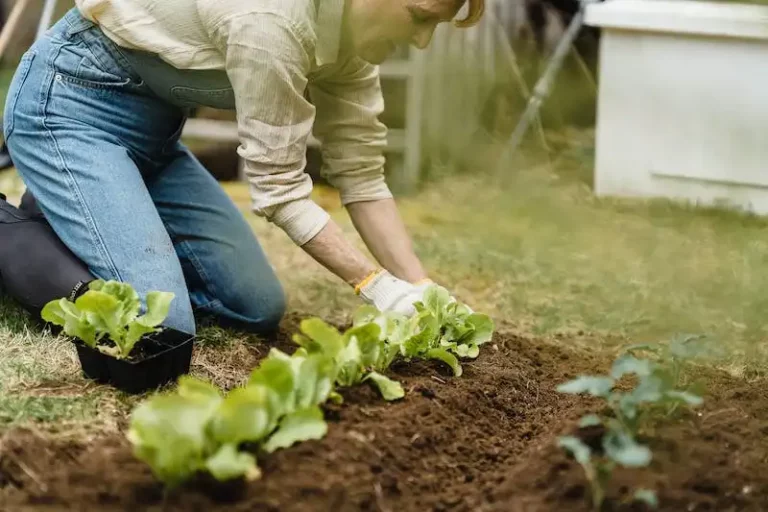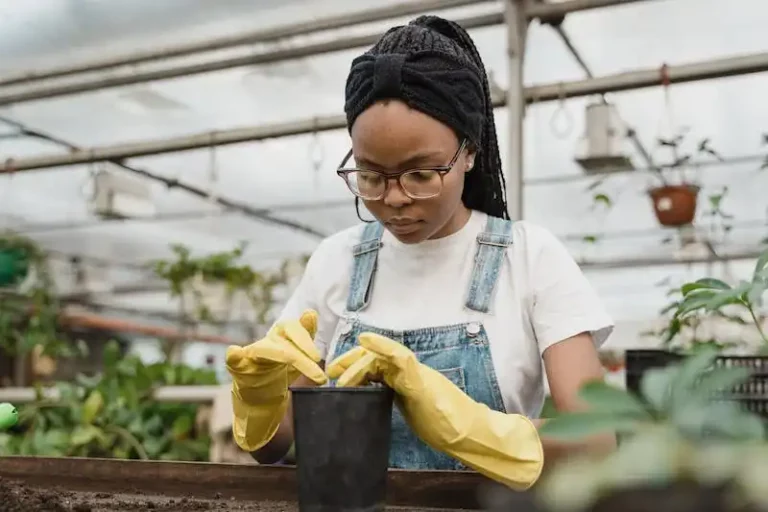Harvesting turnips is a crucial step in growing these versatile vegetables. Turnips are a cool-weather crop, which means they thrive in the spring and fall seasons. The best time to harvest turnips depends on the type you’ve planted and the conditions they have been growing in.
One of the great benefits of turnips is that you can harvest them at different stages of maturity. If you prefer the tender and mild taste, you can harvest them when they are young and small. On the other hand, if you enjoy the earthy and strong flavor, you can wait until they mature and grow to a larger size.
Harvesting turnips is relatively straightforward. Once the greens appear vibrant and healthy, you can start harvesting them. Gently pull the turnip out of the ground, making sure to remove the entire root. Tip: If you’re having trouble pulling them out, you can use a garden fork to loosen the soil around the root.
After harvesting, it’s essential to store your turnips correctly to ensure their long-term freshness. Storing them in a cool, dark place, such as a garage or a drawer, is a good option. You can also store them in the refrigerator, but make sure to remove any greens as they can cause the roots to wilt.
If you’re planning to store turnips for a more extended period, you can try storing them in plastic bags with holes for ventilation. This method allows the turnips to stay fresh for up to several months. Just make sure to check them regularly and remove any turnips that are showing signs of decay.
When it comes to harvesting turnips during summer, you need to be aware of some potential challenges. Turnips are susceptible to pests like the cabbage root fly and diseases like the turnip mosaic virus. To prevent attacks, it’s best to harvest them as soon as possible once they are ready.
In terms of the physical appearance of a mature turnip, it should have a firm and fleshy root, a well-formed bulb shape, and vibrant leaves. The size of a mature turnip can vary, but it is generally around 2-3 inches in diameter. Remember, the larger the turnip, the longer it takes to mature, so be patient and wait for the perfect size.
In conclusion, growing and harvesting turnips can be a rewarding experience. By following this guide, you will have everything you need to know about when to harvest turnips and how to store them correctly. So, get smart with your turnip planting and start enjoying these delicious vegetables all season long!
Turnip fleshy and very tasty especially when home-grown
Turnips are a fleshy and very tasty vegetable, particularly when grown at home. They can be eaten raw or cooked and have a crisp texture and a slightly peppery flavor. Growing your own turnips allows you to enjoy them at their peak freshness and flavor.
When it comes to harvesting turnips, timing is crucial. Generally, turnips are ready to harvest within 6 to 10 weeks after sowing the seeds. They can be left in the ground for a little longer if you prefer larger turnips, but be sure to check their size regularly to ensure they don’t become too large and tough to eat.
Turnips can tolerate cool weather and light frosts, making them a great vegetable to grow in early spring or fall. If temperatures drop below freezing, it’s best to harvest the turnips and store them indoors as they can be damaged by frost.
A good rule of thumb for determining if turnips are ready to harvest is to check the size of their bulbs. Most turnips are ready to harvest when the bulb is around 2 to 3 inches in diameter. To remove the turnips, loosen the soil around the base of the plant and gently lift them out.
Once you’ve harvested your turnips, it’s important to wash them thoroughly to remove any dirt or debris. You can store turnips in the refrigerator for up to a few weeks, but be sure to remove the greens as they can make the turnips spoil faster.
If you’re looking to store turnips long-term, another method is freezing. After washing and blanching the turnips for a couple of minutes, you can store them in airtight containers or freezer bags for up to several months. Freezing turnips can help preserve their flavor and texture for later use.
When it comes to growing turnips, they are considered a smart companion plant. Turnips attract flea beetles, which can attack other plants in the cabbage family. By planting turnips as a trap crop, you can divert the flea beetles from attacking your other vegetables.
In summary, growing turnips can be a straightforward process that provides you with a tasty and versatile vegetable. By following the right conditions for growth, harvesting at the right time, and storing them properly, you can enjoy the benefits of home-grown turnips throughout the year.
Season for sowing turnip
Sowing turnips at the right time is crucial in ensuring a successful crop. Turnips thrive in cool weather conditions and can tolerate light frost, making them an ideal vegetable for early spring or fall planting.
In areas with mild winters, turnips can be sown from September to November for a winter harvest. If you live in a region with harsh winters, it’s best to sow turnips in early spring after the last frost.
Turnips are a relatively fast-growing vegetable, with most varieties reaching maturity in about 30 to 60 days. The timing of planting is important, as excessive heat can affect their growth. Sowing turnip seeds too late in the season may result in slower growth and potentially bolted plants.
Before sowing turnip seeds, it’s essential to prepare the soil properly. Turnips prefer loose, well-draining soil, so ensure you have adequately amended the soil by adding organic matter or compost. This helps promote healthy root development and prevents issues like root rot.
To sow turnip seeds, create shallow trenches in the prepared soil. Sow the seeds thinly along the trench and cover them with a light layer of soil. It’s important not to plant the seeds too deep, as this can hinder germination. Water the seeds gently after planting to ensure proper moisture levels.
If you’re growing turnips for their greens, you’ll be able to start picking them when they’ve reached about 4-6 inches in height. Harvesting the greens can be done by gently pulling them off the plant, starting from the outer leaves and working your way inward.
For the turnip root itself, it’s best to harvest them when they reach about 2-3 inches in diameter. You can gauge their size by checking the top of the root that is exposed above the soil level. The roots should feel firm to the touch and have a smooth texture.
Harvesting turnips is a simple process. Gently loosen the soil around the root, being careful not to damage it. With a firm grip on the leaves, gently pull the turnip out of the ground. After harvesting, wash the turnips thoroughly to remove any soil and store them in a cool, dry place or the refrigerator.
By sowing turnips at the right time and following proper harvesting techniques, you can enjoy the benefits of home-grown turnips. Whether you’re growing them for their fleshy roots or nutritious greens, turnips are a versatile and rewarding crop to cultivate.
Sowing turnip correctly
When sowing turnips, it is important to do it correctly to ensure a successful harvest. Here is a guide to help you sow turnips properly:
1. Start by choosing the right variety of turnips for your garden. There are many different types available, each with its own characteristics and preferred growing conditions.
2. Before sowing, prepare the soil by removing any weeds and loosening it with a garden fork. Turnips prefer well-drained soil, so make sure it is not too compacted.
3. Sow the turnip seeds directly into the garden bed or in containers. Make sure you sow them thinly and evenly, about ¼ inch deep. Space the seeds about 2 inches apart to give the turnips enough room to grow.
4. Water the seeds after sowing to ensure proper germination. Keep the soil moist, but not saturated, throughout the germination period. This usually takes about 5 to 10 days.
5. Once the turnips have germinated, thin them out if necessary. Leave about 4 to 6 inches of space between each plant to allow for proper growth. You can use the thinned seedlings as tasty greens in salads or other dishes.
6. It is important to take care of your growing turnips by providing them with the necessary nutrients and watering them regularly. Turnips are relatively easy to grow and don’t require much attention.
7. Keep an eye out for any pests or diseases that may affect your turnips. Common pests include flea beetles and cabbage worms, while diseases like blight and virus can also be a problem. Rotate your crops annually and practice good garden hygiene to minimize the risk of infestations.
8. Harvest the turnips when they are ready. This usually takes about 6 to 8 weeks from sowing, depending on the variety. Look for large, fleshy roots that have reached their full size. The leaves may also be harvested for their greens throughout the growing season.
9. If you are growing turnips for winter storage, make sure to harvest them before the first freeze. Store them in a cool, dry place, like a root cellar or garage, to ensure their long-term preservation.
10. Enjoy your home-grown turnips! Whether you use them in soups, stews, or other dishes, fresh turnips from your own garden are a delicious and healthy addition to any meal.
Caring for turnip
Caring for turnips is essential to ensure a successful harvest. Here are some tips on how to properly care for your turnip crops:
1. Watering: Turnips need regular watering, especially during hotter months. Make sure to water the plants consistently to keep the soil moist. Lack of water can slow down the growth of turnips.
2. Soil Quality: Turnips grow best in loose, well-drained soil. Before planting, consider amending the soil with organic matter to improve the soil quality.
3. Timing: Knowing when to harvest turnips is crucial. Generally, turnips are ready for harvesting in about 30 to 60 days from sowing, depending on the variety. Keep an eye on the size of the root and check if it feels mature enough.
4. Pest Control: Turnips can be attacked by various pests, such as flea beetles and blight. To protect your crop, consider rotating the location of your turnip patch each year and regularly check for any signs of pest infestation.
5. Storing: If you’ve harvested more turnips than you can use immediately, it’s important to know how to store them properly. Turnip greens can be freeze-dried, while the roots can be stored in a cool, dark place, such as a root cellar or a refrigerator drawer.
By following these caring tips, you can ensure the growth and quality of your turnips, making your harvest a successful and flavorful one.



